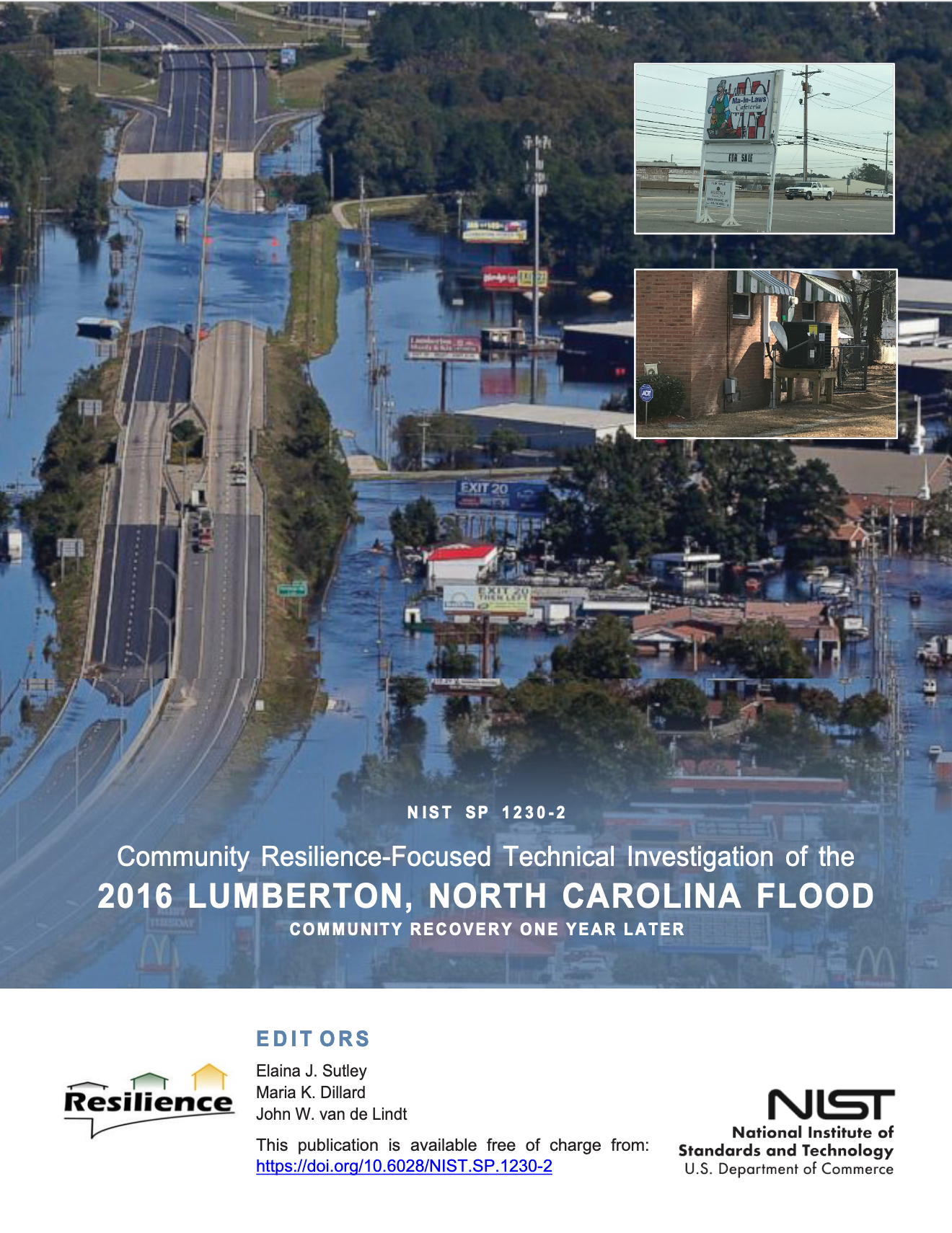Long-term NIST community resilience study releases second report
Published on April 26, 2021

In early October 2016, Hurricane Matthew crossed North Carolina as a category 1 storm with some areas receiving 15 in. to 18 in. of rainfall on already saturated soil. The small city of Lumberton, NC, experienced significant flooding from the Lumber River. A group funded by the National Institute of Standards and Technology, NIST, conducted a field study in Lumberton immediately after the flooding. One year later, the group returned to the city to document its recovery and continue what has become an ongoing, long-term look at community resilience.
This multidisciplinary, longitudinal study is led by the NIST Center for Risk-Based Community Resilience Planning, teaming with researchers from NISTs Community Resilience, Disaster Failure Studies, and Applied Economics programs.
In April 2021, the team released its second report, Community Resilience-Focused Technical Investigation of the 2016 Lumberton, North Carolina Flood: Community Recovery One Year Later. The report, NIST Special Publication 1230-2, was edited by the field study leadership team: Elaina Sutley at the University of Kansas, Maria Dillard at NIST, and John van de Lindt at Colorado State University.
The Center and NIST team is studying Lumbertons recovery progress with an emphasis on the citys housing, businesses, schools, community and state-level decisions, and the intersection of these sectors in community recovery. This type of investigation is critical for the study of community resilience, including for understanding attributes that make communities resilient to natural hazards.
This second report in the series of community resilience-focused field studies is Wave 2 of the on-going Lumberton, North Carolina Flood study. (Wave 1 documented the initial physical and socio-economic impacts of the flooding on the community.) In January 2018, Wave 2 began the assessment of recovery with two major objectives: first, to document community interdependencies, and secondly, to document the point-in-time progress of Lumbertons recovery.
Wave 2 data collection dealt primarily with the recovery process of the most heavily-affected housing and businesses through two systematic surveys, as well as interviews and meetings with select public officials. Specialists in social science and engineering collaborated to devise the survey instruments, which have been published in the DesignSafe Data Depot. Along with an IRB protocol, the surveys are available for re-use by other disaster researchers. Many of the projects team members also are affiliated with the NSF-funded Natural Hazards Engineering Research Infrastructure community, called NHERI.
The survey data are intended to validate community resilience models, said Sutley. So we were very intentional to follow a robust process for survey design that included multiple rounds of obtaining input and seeking review from the diverse disciplinary experts on our team, as well as instrument testing and practicing by the cross-disciplinary data collectors.
This Wave 2 report summarizes the longitudinal study design and the results obtained through the housing and business surveys, as well as semi-structured public sector interviews and meetings. Collectively, these findings quantitatively and qualitatively document the impacts and early recovery process for the community of Lumberton, NC. The report provides conclusions across all data collection efforts, as well as methodological considerations, and next steps for the longitudinal study.





